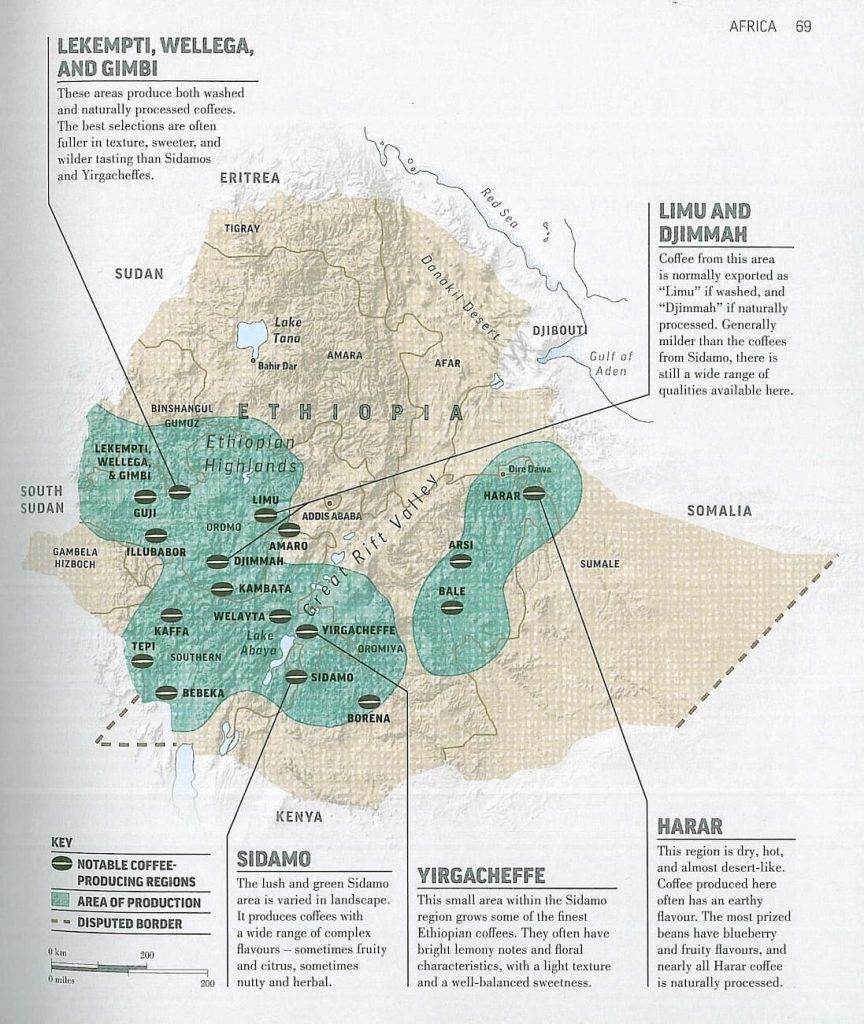The complex blend of species and varieties that are native to Ethiopia gives these coffees their potential for unique flavors. They are famous for their floral, herbal and citrus aromas, unusually distinct and fine.
Ethiopia is often regarded as the birthplace of Arabica coffee, although recent studies indicate that South Sudan may also have the right to claim this title. Ethiopia does not have many coffee farms – they are either referred to as garden, forest, semi-forest or plantation – but about 15 million people are involved in the coffee production process, from harvesting to export. The coffee grows wild, produced mostly by subsistence farmers, who only sell it for a few months each year.
Ethiopia has a biodiversity of species and varieties not found elsewhere, with many still unidentified. Due to the mix of cultivated Heirloom varieties – such as Mocha and Geisha – Ethiopian coffee beans are often ununiform in size and shape. Climate change is eradicating wild species of coffee trees that may hold genetic keys to coffee's survival. The huge genetic range of local Heirloom varieties may be the key to securing the future of coffee worldwide.
ETHIOPIA KEY FACTS
PERCENTAGE OF THE WORLD MARKET 4,5%
HARVEST October-December
PROCESSES Washed and natural
MAIN TYPES Arabica, soiuri autohtone Heirloom
WORLD RANKING AS A MANUFACTURER on the 5th place
Coffee Ethiopia Sidamo
The lush and green Sidamo area is varied in landscape. Produces coffees with a wide range of complex flavors – sometimes fruits and citrus fruits, sometimes nuts and plants.
Coffee Ethiopia Yirgacheffe
In this small area in the vicinity of the Sidamo region, some of the best Ethiopian coffees grow. The coffees here often have a It's light lemon and floral characteristics, with a light texture and a well-balanced sweetness .
Cafea Ethiopia Guji
These areas produce both washed and naturally processed coffee. The best selections are often fuller in texture, sweeter and wilder in taste than the coffees of Sidamo and Yirgacheffe.
Cafea Ethiopia Limu Djimmah
Coffee from this area is normally exported as 'Limu' if washed and 'Djimmah' if processed naturally. On the whole weaker than Sidamo coffees , however, there is a wide range of qualities available here.
Cafea Ethiopia Harar
This region is dry, hot, and almost desert. The coffee produced here often has a earthy aroma . The most appreciated grains have Blueberry and fruit flavors , and almost all Harar coffee is processed naturally.
Listen to the summary of the article



